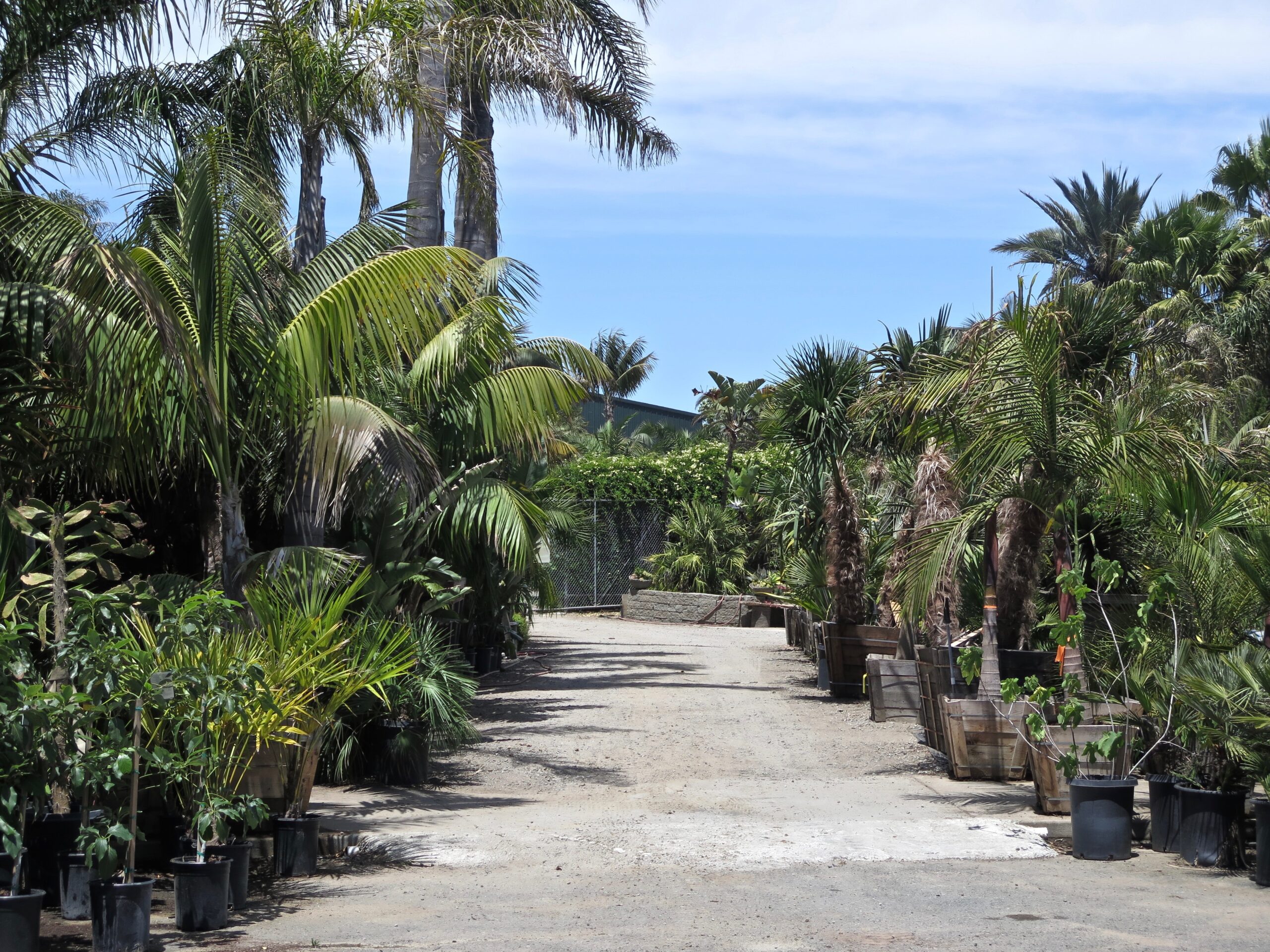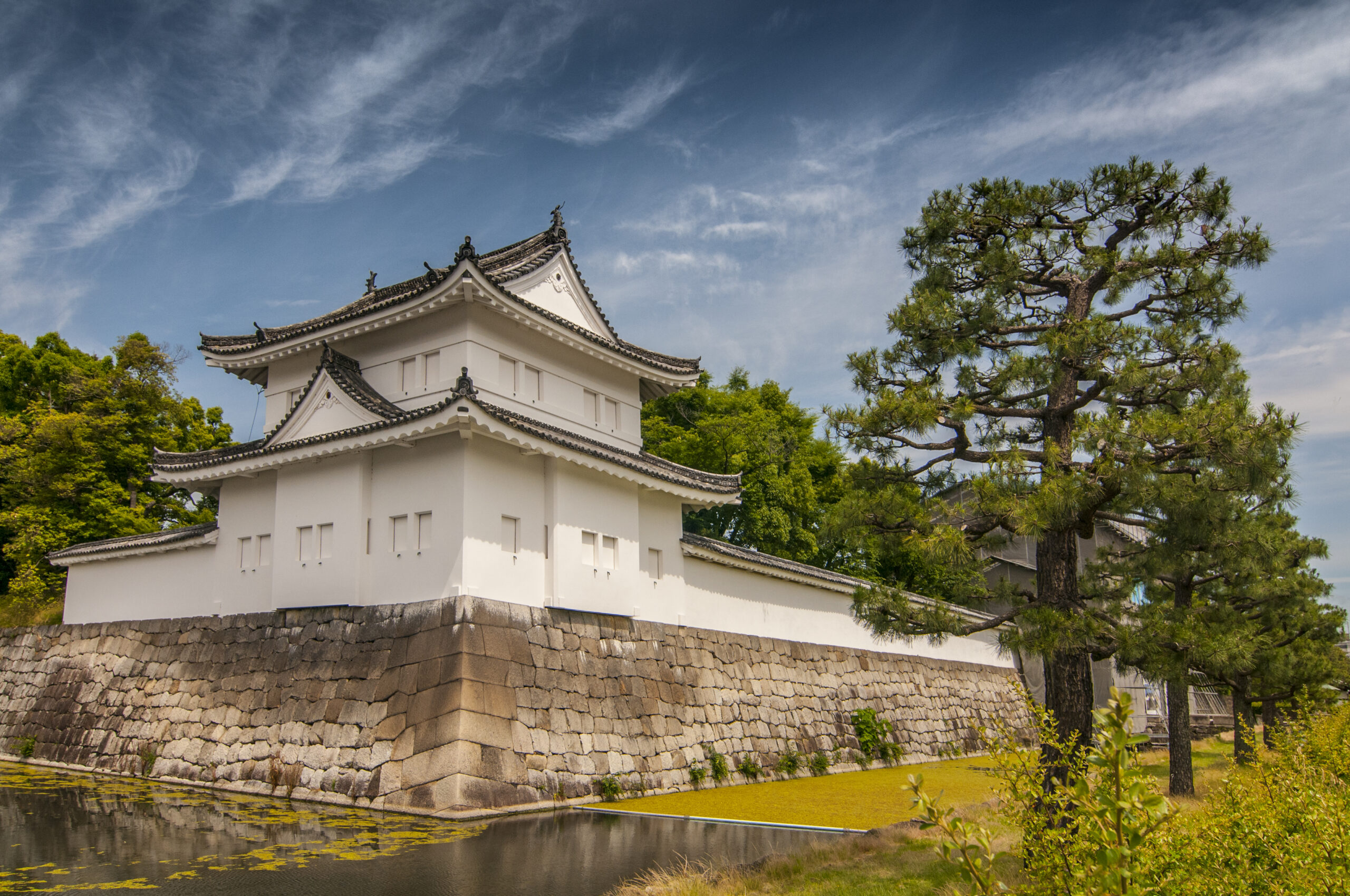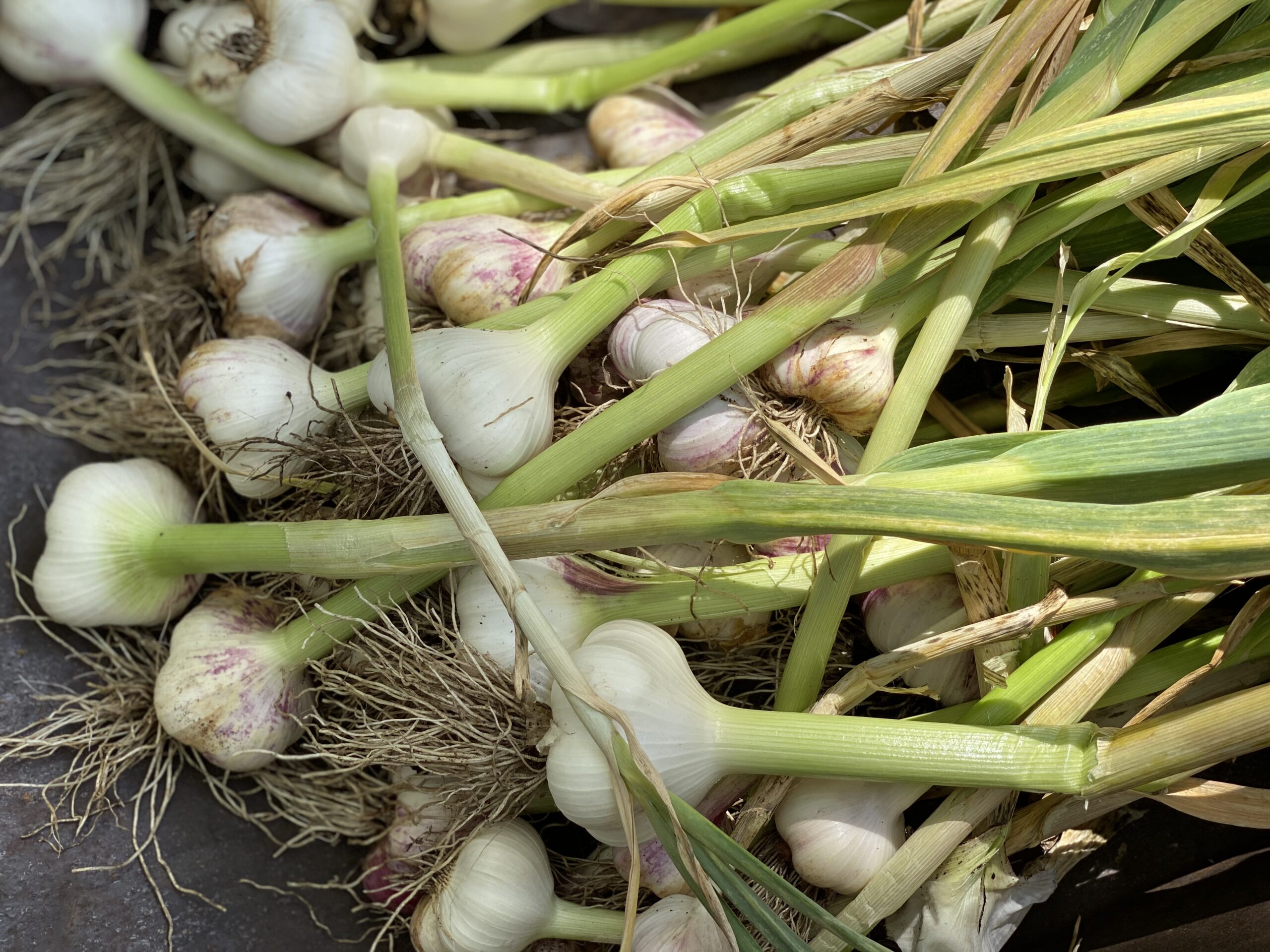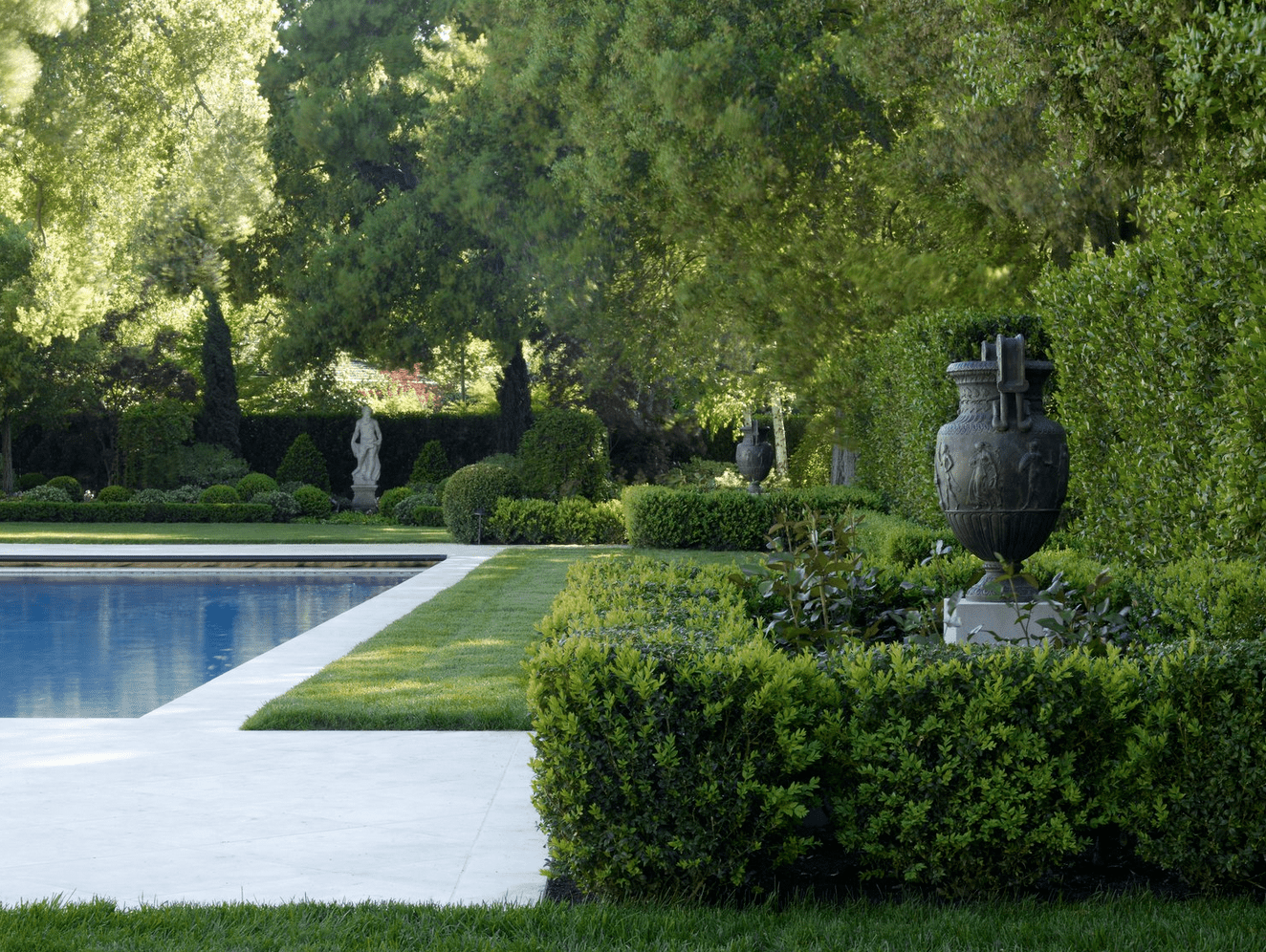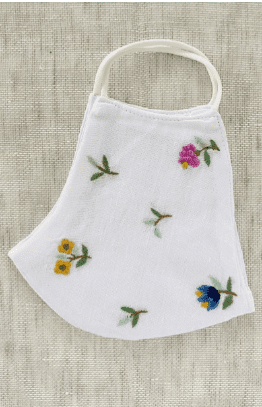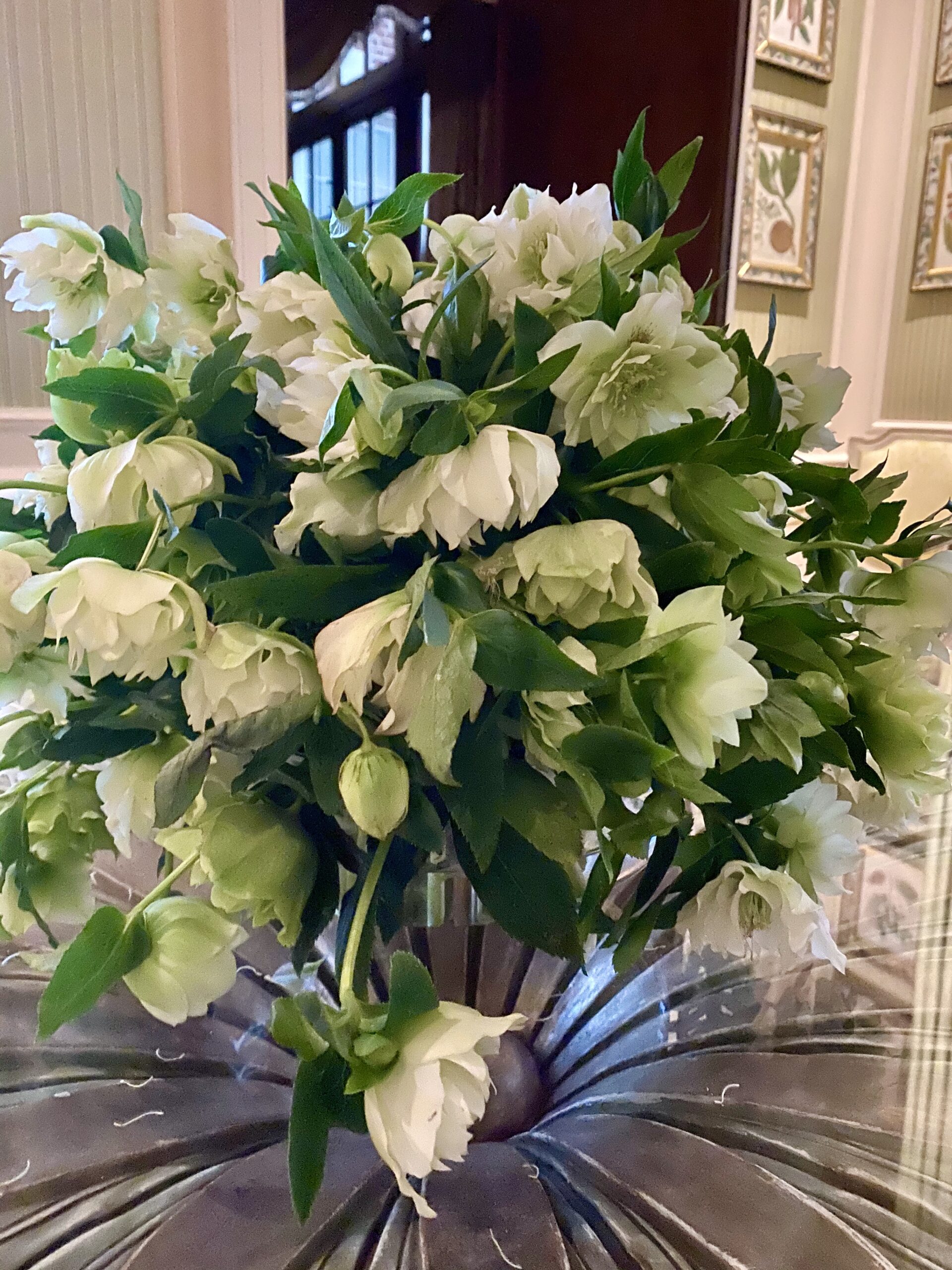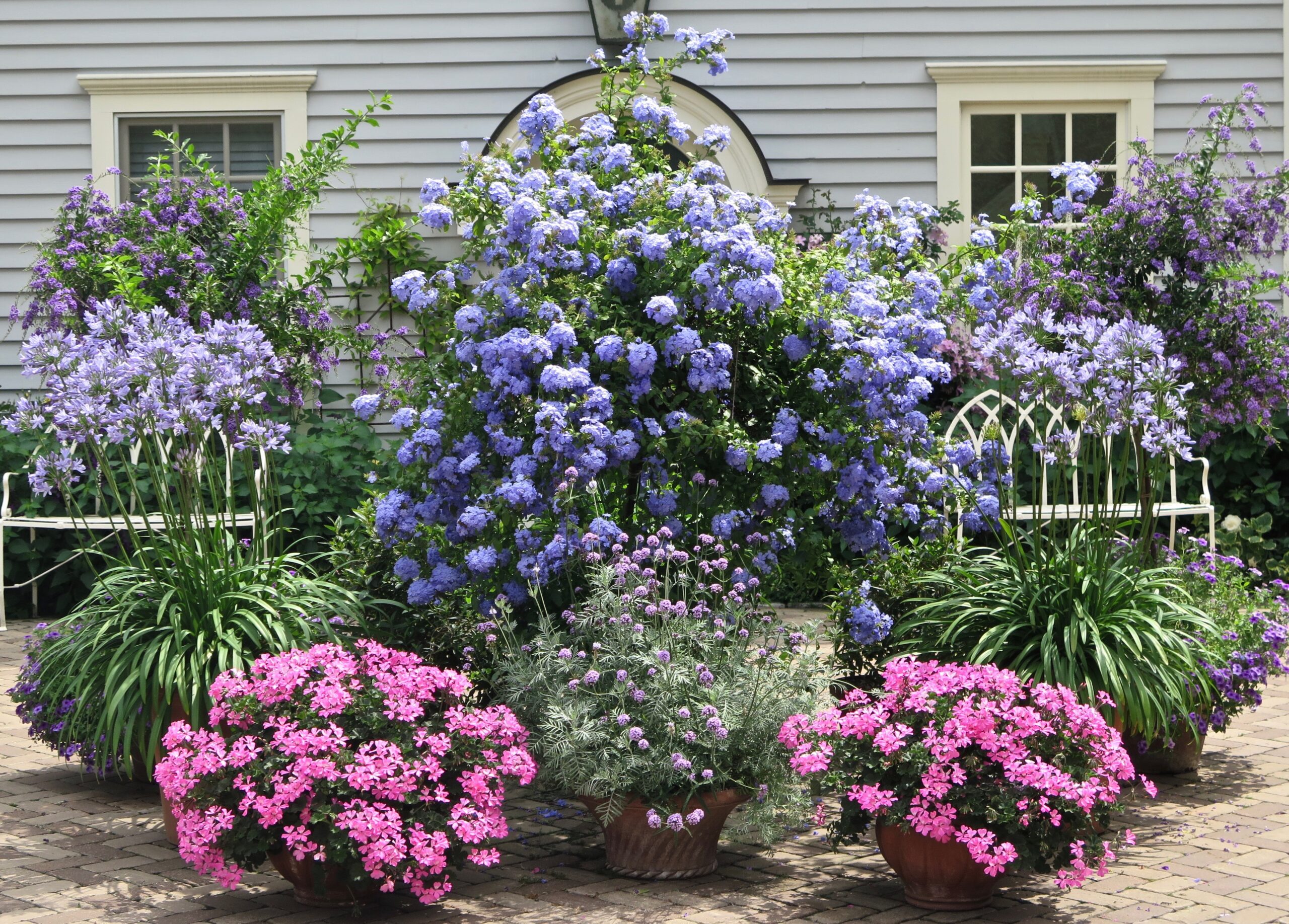One of the many things my daughter-in-law Maggie and I share is our absolute LOVE of avocados. That’s why I was so excited when she told me about her discovery of avocado trees at Golden Gate Palms & Exotics, located in Port Richmond. We immediately booked a date to check out the possibility of growing avocado trees in our gardens (both Zone 14) and hopefully bring one or two home. (We’ve since discovered that we also could have found them at Devil Mountian in San Ramon, but we found what we were looking for at Golden Gate).
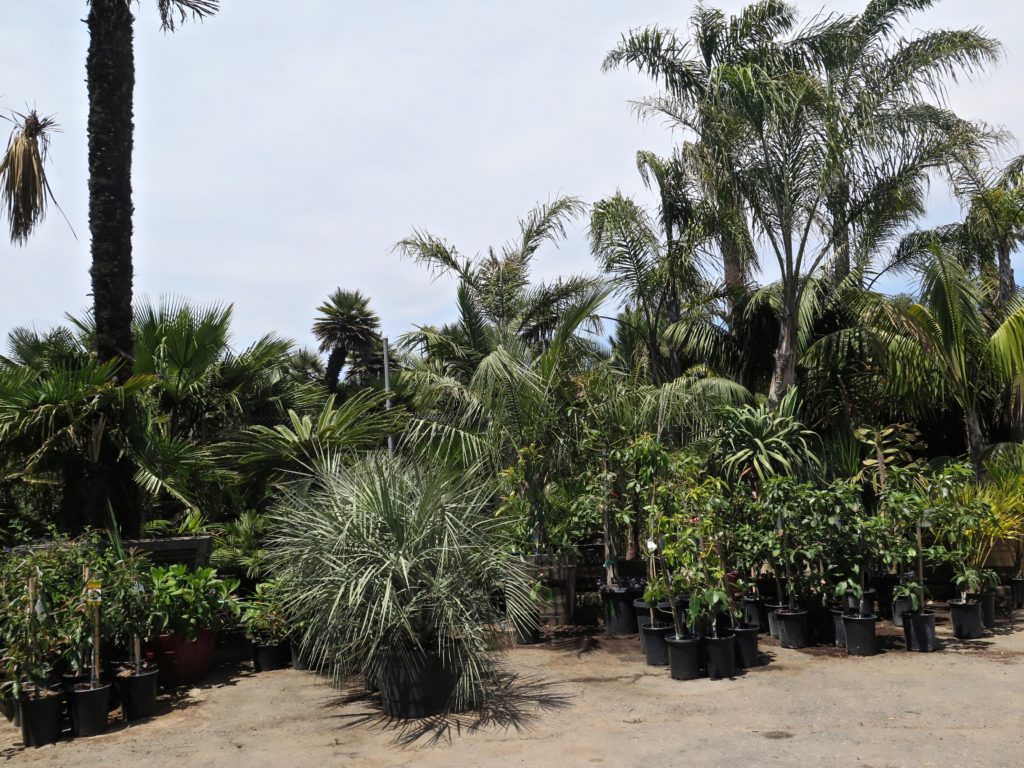

There were several varieties to choose from and many variables to consider. How tall and big do we want our trees to be? Which varieties will handle the specific weather conditions and potential frost of our East Bay and Napa gardens? Which varieties produce the best tasting avocados? Did we need more than one for cross-pollination?
We decided that neither one of us could afford the room for a huge avocado tree, so we needed to consider potting them or buying “dwarf” varieties. (“Dwarf” can still mean 10′ x 10′!). We both wanted hardy plants that could withstand frost as much as possible and surprisingly the varieties they carry from are hardy to 18-24 degrees. (We’d still probably want to provide a frost cloth cover over the trees in the wintertime for extra protection). We were unwilling to compromise on taste. The avocados HAD to be delicious, otherwise, why grow them at all? And the good news is that avocados don’t need a second tree to pollinate and produce fruit.
After consulting with Gary and Dylon at the nursery, we ended up choosing our varieties and more avocado trees than we thought we would. Maggie took 4 plants and I took 3; we chose ‘Bacon’, ‘Mexicola’ and ‘Mexicola Grande’ and decided to pot them, rather than putting them in the ground. This not only solves the space problem, but gives us some time to make sure they will grow well in our gardens before putting them in the ground.
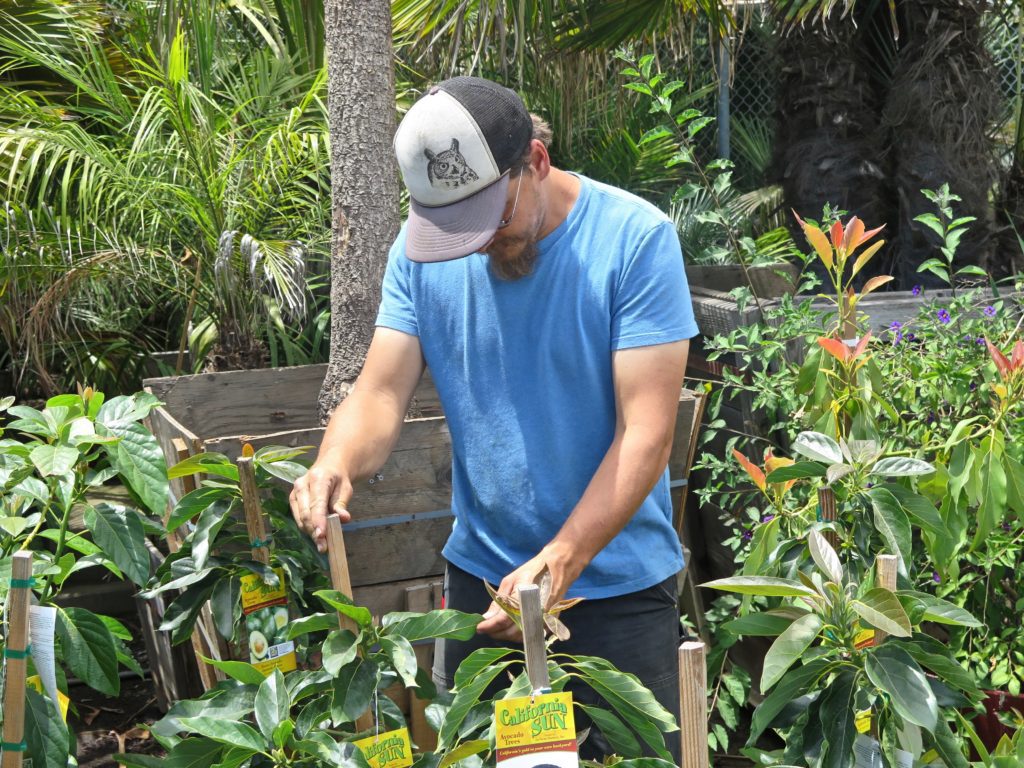

Dylon was helpful in choosing the best specimens for us. He examined the leaves, the distribution of the branches and the overall health and fullness of our individual plants, so we ended up with nice choices.
Now it’s time to plant them. Here are the pointers Dylan gave us for potting our trees:
- The roots are very fragile so take great care when removing them from their containers and transplanting them.
- Choose a container that has drainage holes in the bottom (as most do), as avocados need to drain well.
- Combine 2 parts potting soil + 1 part Perlite (a volcanic glass that will allow more air around the roots of the plant and increase drainage). Avocados require a pH of 7 or below, so you may want to test your soil annually to make sure you’re in the range.
- When planting the tree, create a hole for the tree that is 2x the size of the root ball to protect the roots as you transplant it and then fill in the space with the combined soil/Perlite. Be sure to locate the first roots of the plant and plant the root ball level to slightly “proud” in the soil, being careful to not leave the roots exposed to the sun.
- Water deeply every other day, allowing time for the soil to dry out in-between waterings. Watch the leaves for an indication as to whether your watering amount is adequate or not.
- Fertilize every 60 days with an organic fertilizer containing nitrogen, the primary ingredient that avocados need in order to be healthy. Dylon recommended the fertilizer Osmocote, because it is time released, but I would hold out for an organic alternative which a local nursery can recommend.
- Avocados won’t do well or produce fruit if they are damaged by too much heat or cold, so it’s necessary to whitewash our avocado trunks to protect the tree from both heat and cold. To create the whitewash, combine white latex paint and water, in a ratio of 1:1) and paint the trunks. It’s important to not overly dilute the paint so you can end up with a strong white color and protective barrier for the plant.
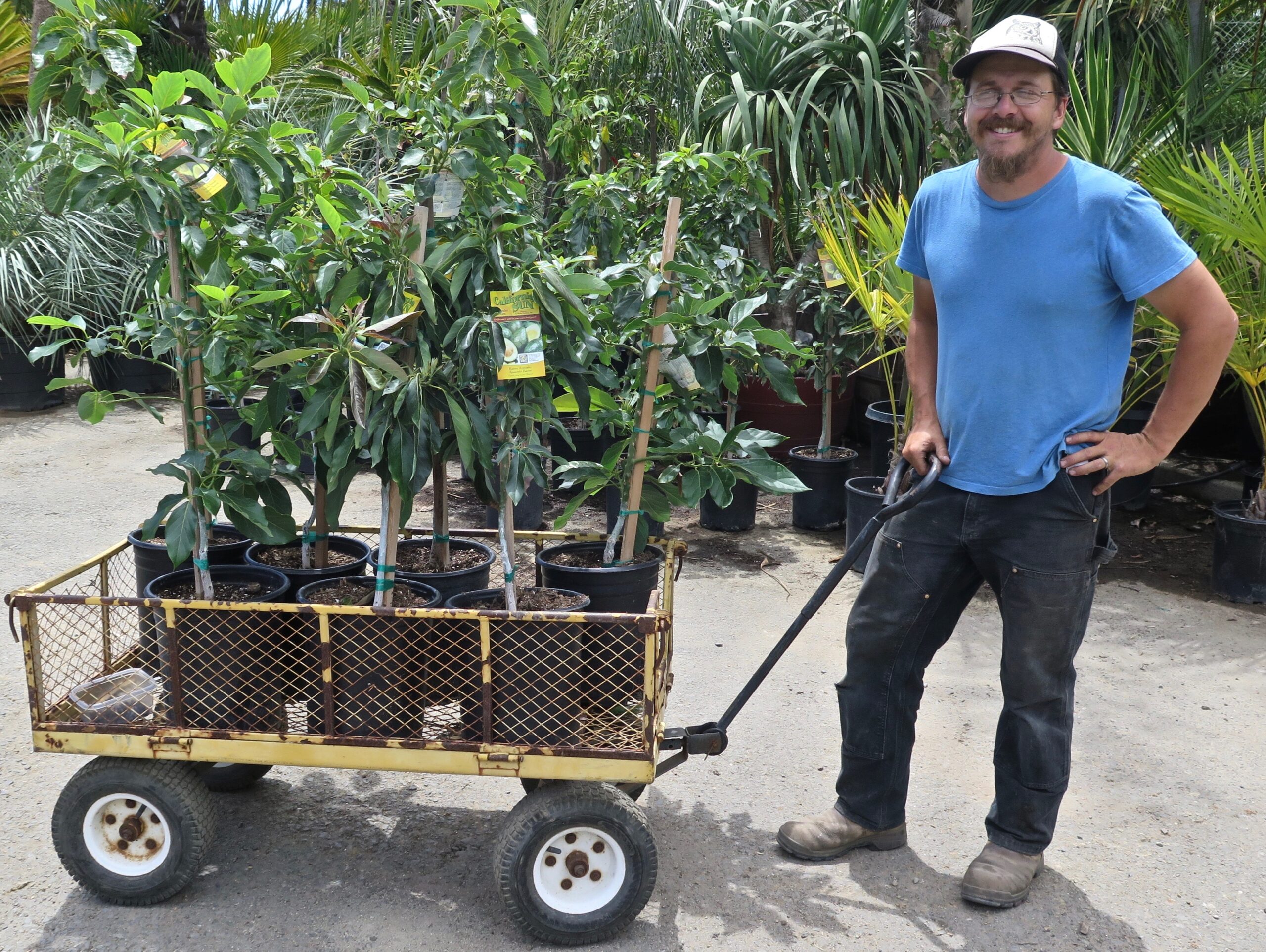

So, Maggie and I begin our avocado adventure. Stay tuned to find out if we are successful. If so, we are going to be two very happy ladies!
May 19, 2017 Update: After a very wet winter and a few very cold Napa days, only one of my three avocados made it – my Mexicola. It’s growing nicely in its container, with a lot of new growth this spring. We’ll give it another year to see how it does next winter.

